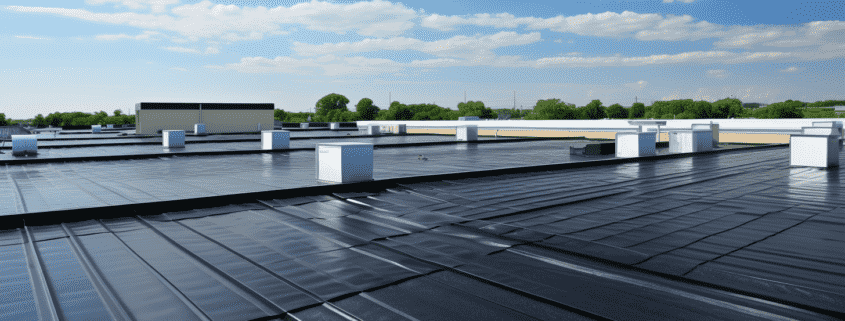Flat roofs are renowned for their modern aesthetic and space-saving design, making them famous for commercial and residential buildings. However, a common question is how long a flat roof can withstand the elements. The longevity of flat roofs is a subject of considerable debate, influenced by various factors that can affect their lifespan. Consulting with a professional roofing contractor is essential for understanding these variables and how to mitigate potential issues, ensuring the longevity of your flat roof. Let’s delve into the average lifespan of flat roofs and the key elements that determine their durability.
Average Lifespan of Flat Roofs
On average, flat roofs range from 10 to 30 years, depending on factors such as roofing materials, climate impact, installation quality, and maintenance practices. The choice of roofing materials significantly affects the longevity of flat roofs. Materials like EPDM rubber, TPO, PVC, and modified bitumen are commonly used due to their durability and resistance to weathering. Climate impact is another crucial factor influencing the lifespan of flat roofs. Extreme weather conditions, such as heavy rainfall, snow, or prolonged exposure to UV radiation, can accelerate the deterioration of roofing materials. Proper installation techniques, regular inspections, and timely repairs are essential for maximizing the lifespan of flat roofs and ensuring their structural integrity over time.
Factors Influencing Roof Longevity
Factors influencing the longevity of flat roofs include the choice of roofing materials, climate conditions, installation quality, and maintenance practices. When considering the factors that affect the lifespan of a flat roof, it’s essential to take into account the following key points:
- Climate Impact: Extreme weather conditions, such as heavy rainfall, snow, or intense sunlight, can significantly impact the durability of a flat roof.
- Material Choice: Different roofing materials have varying lifespans and resistance to weathering, affecting the roof’s lifespan.
- Installation Quality: Proper installation techniques and attention to detail during roofing can improve the roof’s longevity.
- Drainage System: Effective drainage systems help prevent water pooling, which can damage the roof and reduce its lifespan.
- Regular Maintenance: Consistent upkeep, inspections, and repairs play a crucial role in extending the life of a flat roof.
Importance of Regular Roof Maintenance
Proper flat roof maintenance is paramount to ensuring its longevity and structural integrity. Regular roof inspections are crucial in identifying issues early on, allowing for prompt repairs to prevent more extensive damage. Inspections should focus on checking for signs of wear and tear, ponding water, and debris accumulation. Additionally, maintaining efficient drainage systems is essential to prevent water pooling, which can lead to leaks and deterioration of the roofing material. Clearing debris from gutters and ensuring downspouts are unobstructed are vital tasks in preserving the effectiveness of the drainage system. By staying proactive with maintenance, property owners can extend the lifespan of their flat roofs and minimize the need for costly repairs.
Signs of Flat Roof Deterioration
Detecting signs of flat roof deterioration is crucial for maintaining the structural integrity and longevity of the roofing system. Being vigilant about these signs can help prevent leaks quickly and choose appropriate repair options.
Tips for Prolonging Roof Lifespan
Implementing proactive maintenance strategies is essential to maximize a flat roof’s longevity. A weatherproofing strategy protects the roof from environmental elements such as UV radiation, rain, and snow. Regular inspections should be conducted to identify and address any potential issues promptly. Applying weather-resistant coatings can help enhance the roof’s durability and resistance to harsh weather conditions.
Additionally, ensuring proper drainage solutions are in place is vital to prevent water accumulation, which can lead to water damage and deterioration of the roof membrane. Clearing debris from drains and gutters regularly can prevent blockages and ensure efficient water flow off the roof. By following these tips, flat roof owners can effectively prolong their roof’s lifespan.

1 Comment
What Is Flat Roofing? | Premier Home Solutions
April 23, 2024[…] maintain compared to sloped roofs. Routine inspections and maintenance are essential to guarantee the longevity of flat roofing systems. This includes identifying and repairing any leaks or damages […]